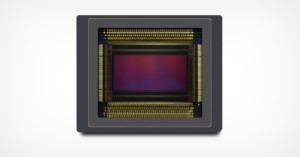
Panasonic’s Organic Sensor May Be Complete, But Likely Won’t Be Used
The future of Panasonic's organic sensor, a global shutter technology it has been developing with Fujifilm since 2013, doesn't look promising.

The future of Panasonic's organic sensor, a global shutter technology it has been developing with Fujifilm since 2013, doesn't look promising.

Last week, RED unveiled a pair of new large-format global shutter cinema cameras, the V-Raptor (X) and V-Raptor (X) XL. Tedious model names aside, these cameras have 40.96 x 21.6-millimeter image sensors and make lofty promises concerning dynamic range.

No camera is as exciting or interesting as the Sony a9 III. Since Sony announced it in early November, the a9 III has occupied considerable space in my mind. Many questions have swirled since, and the answers to each have proved mercurial.

Make way, Sony: RED Digital Cinema wants to get on the global shutter train. RED's V-Raptor (X) and V-Raptor (X) XL video cameras feature newly developed global shutter image sensors.

In a recent interview, Panasonic says that it hopes to begin commercializing its organic CMOS sensor "in a few years," indicating that the sensor first shown in 2013 is still not close to coming to market.

Panasonic has touted additional benefits of the organic CMOS sensor that it has been working on for nearly a decade, and while the developments still sound enticing, the company seems no closer to release.

Raspberry Pi's new 1.6-megapixel Global Shutter Camera module promises instantaneous readout across the entire image area, eliminating rolling shutter distortion.

Panasonic claims that its currently in-development Organic Photoconductive Film (OPF) CMOS uses a unique structure that will allow it to achieve high resolution, wide dynamic range, and a global shutter. Basically, it would be a game-changer.

Gpixel has developed a new global shutter 4/3-inch 10-megapixel sensor that it claims will be capable of shooting 4K video at up to 2,000 frames per second.